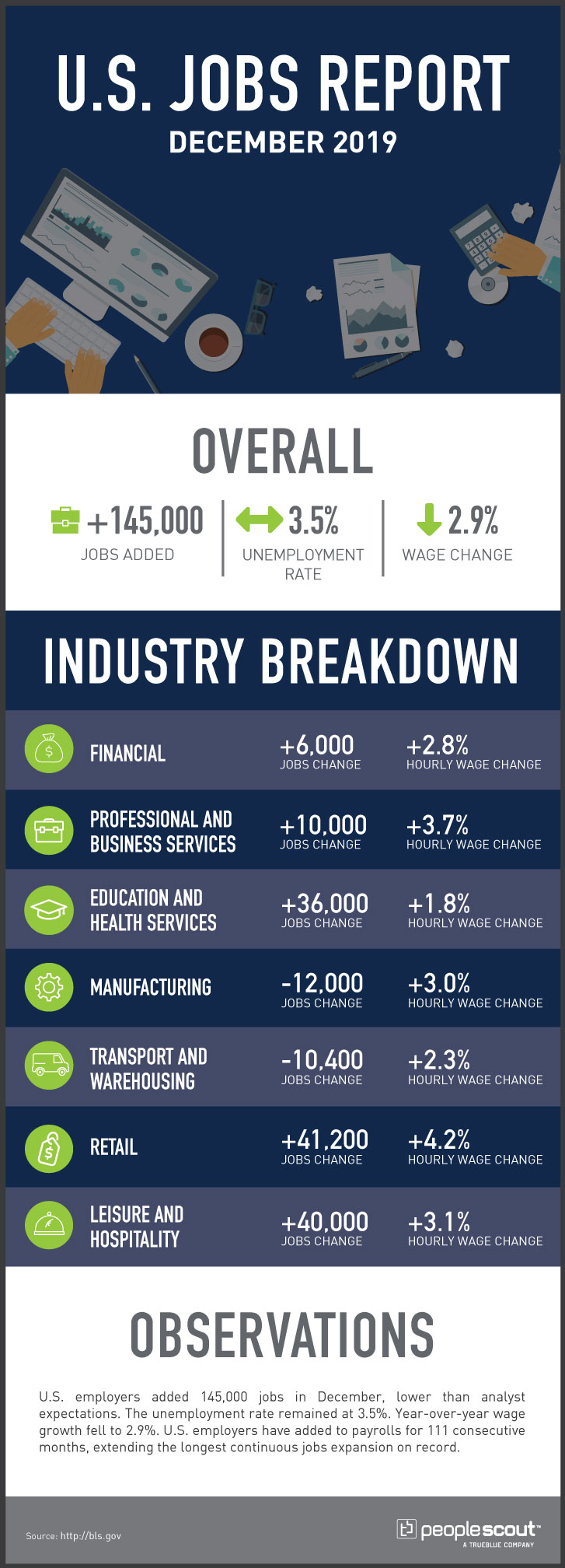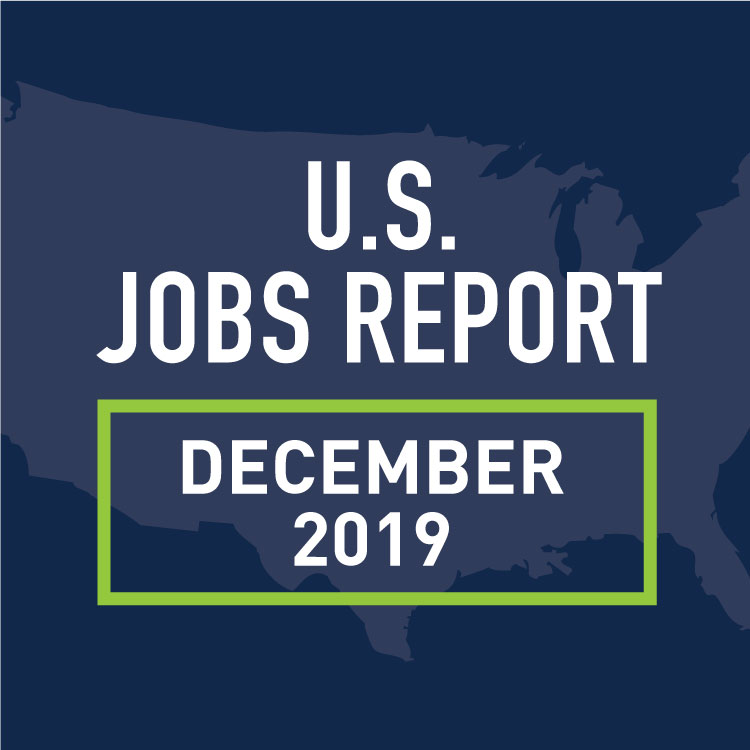The Labor Department released its December 2019 jobs report which shows that U.S. employers added 145,000 jobs in December, which was below analyst expectations. The unemployment rate remained at 3.5%. The labor force participation rate was also unchanged at 63.2%. Year-over-year wage growth slipped to 2.9%. U.S. employers have added to payrolls for 111 straight months, extending the longest continuous jobs expansion on record.

The Numbers
145,000: The economy added 145,000 jobs in December.
3.5%: The unemployment rate held at 3.5%.
2.9%: Average hourly wages increased at a rate of 2.9% over the last year.
The Good
The final jobs report of the decade showed another month of solid job growth. The average monthly gains for the last three months of 2019 were 184,000, which is close to the quarterly averages earlier in the year. In the last year, 2.1 million jobs were added, which is more than sufficient to keep up with the demands of population growth. There were notable monthly increases in the retail sector with 41,200 jobs added, in healthcare which was up by 28,000 and in leisure and hospitality which grew by 40,000.
From an annual perspective, many key sectors recorded job growth or were little changed. Growth in healthcare was especially impressive. The sector added 399,000 jobs in 2019, increasing by 49,000 more positions than in 2018. Even some industries which experienced setbacks over the course of the year posted modest gains overall in 2019. Manufacturing grew by 46,000, and retail jobs increased by 9,000.
The year began with an unemployment rate of 4.0% in January and ended at a 50-year low of 3.5%. Significantly, an alternative measure of unemployment which captures those underemployed and marginally attached to the workforce known as the U-6, fell to 6.7% in December, the lowest on record going back to 1994.
The Bad
The December report confirmed that a decade of robust job growth ended with a notable slow-down. The 2.11 million jobs added last year was a drop from the 2.68 million added in 2018, and 2019 was ranked eighth for job growth in the past 10 years. With the exceptions of healthcare and leisure and hospitality, most key sectors added significantly fewer jobs in 2019 than in 2018. The transportation and warehousing sector which is closely tied to the overall economic health of both the nation and the world, added just 57,000 jobs in 2019, approximately one-fourth of the 2018 gain of 216,000.
The labor participation rate at 63.2% remained steady. However, this rate is still below the levels posted before the Great Recession. The stall in participation may indicate that no matter how low the unemployment rate falls, additional Americans who are out of the labor force are not being drawn back into it. Some economists have suggested that an underlying reason for this is the changing age demographics of the United States due to its low birth rate and aging population. This trend is not expected to change anytime soon.
Instead of posting strong wage gains at a time of historic low unemployment, the rate of growth actually decreased in December. While the 2.9% annual wage increase is still ahead of an inflation rate of just less than 1.5%, workers in many sectors are having their wages grow at a rate much lower than the national average.
Easier to Get a Job Than a Raise
As Diane Swonk, chief economist at Grant Thornton noted: “It’s easier to get a job than a raise in this economy.” While some employers may benefit from attracting those who are seeking a new job due to their stunted paychecks, they may be just as likely to lose talent for the same reason. Adding to the challenge of extremely low unemployment, the most recent jobs opening report showed an increase in vacancies which continues to be higher than those who are unemployed.




